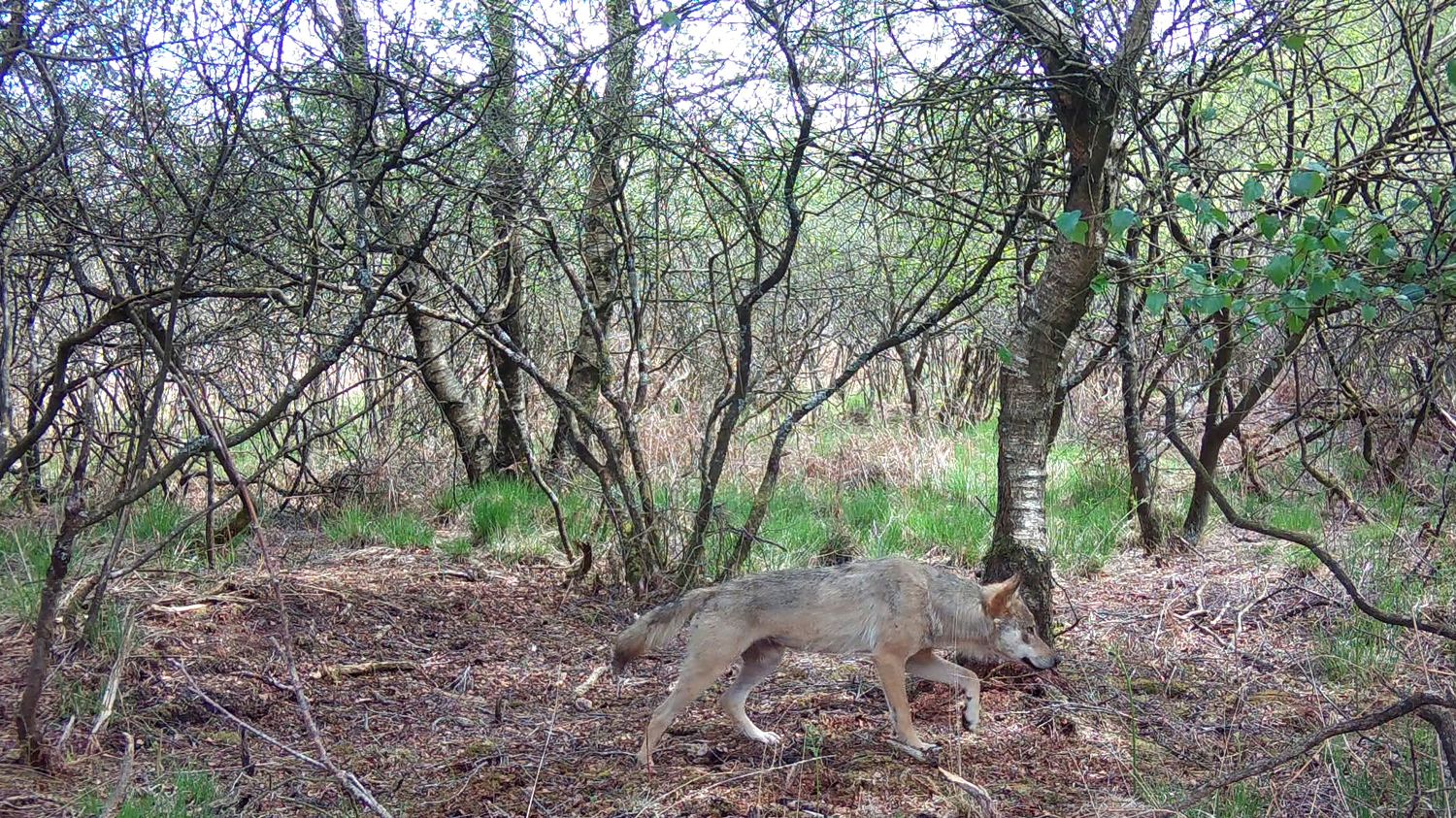According to the French Biodiversity Office, there are currently 1,104 wolves in France. The mammal has expanded its range over the years. Isolated individuals have even been observed in the west of France.
Fifty three. This is the number of departments that the wolf has reconquered since its recurrence on French territory, without voluntary reintroduction by humans, in the 1990s. The national action plan on the wolf 2024-2029, presented Monday September 18 by the Ministries of Agriculture and Ecological Transition, must therefore provide answers to the questions raised by the growing presence of the canid. At stake, in particular: the counting methods and the authorized quotas of wolves killed each year.
The animal has in fact regained ground after disappearing from the French countryside at the beginning of the 20th century. Classified as a “strictly protected species” throughout Europe by the Berne Convention, in 1979, the wolf was able to reinvest its natural habitat. From the 1990s, animals from elsewhere in Europe were again observed in the French Alps.
“The evolution of regulations, the presence of wolves in Italy and Germany, the reforestation which has increased the population of roe deer, stags and wild boars, has really allowed the species to reestablish itself in France,” explains Nicolas Jean, deputy director in charge of large terrestrial predators within the French Biodiversity Office (OFB).
A slow reconquest by the Alps
It was also in the 1990s that the French Biodiversity Office set up the wolf-lynx network. Every year, between October and April, at the period when wolves are most static, professionals and volunteers collect signs of the presence of the wolf, which, coupled with DNA analyzes of stools and hairs recorded in the field and attached to statistical methods allow them to calculate an annual estimate of the number of individuals on a national scale.
Long confined to the mountains of south-eastern France, the packs, which can travel up to 40 km per day according to specialists, have gradually extended their area of presence. In 2022, isolated individuals have even been observed in the west of France. This presence is, however, not visible on this map, the geographic data ending in 2020. At the beginning of September, the French Biodiversity Office gave a provisional estimate of 1,104 wolves in France in 2023.
Since the start of the last national action plan, dated 2018, the number of individuals has almost doubled, from 571 to 1,104. “Today, the wolf population in France is viable”summarizes Nicolas Jean.
A figure contested by breeders
But there is no consensus on this figure. “It does not correspond to what we see on the ground. The real population of wolves is much higher than the estimate given”contests Cédric Labouret, dairy cow breeder in Savoie and representative of the Chambers of Agriculture within the National Wolf Group.
For many breeders, the number of wolves displayed by the OFB is not consistent with the number of attacks recorded: 12,526 in 2022, franceinfo learned from the Ministry of Agriculture. And these annual estimates are all the more contested because they make it possible to calculate the number of wolves that can be legally killed each year. With the current PNA, 19% of the estimated workforce is allowed to be killed in one year.
The breeders are thus calling into question the counting methods of the French Biodiversity Office. “Indications of wolf presence are mostly reported by volunteers and herd attacks are not considered as signs of wolf presence in the territory”, asserts the breeder. The head of the OFB replied that “80% of the workforce in the wolf-lynx network is made up of professionals, staff from the OFB or national parks”.
“Given that more and more areas are affected by wolf predation, the French Biodiversity Office must update its statistical methods and review its calculation methods”says Claude Font, secretary general of the National Sheep Federation and sheep breeder in Haute-Loire. “The same methods are used abroad. They have been submitted to biologists and statisticians”replies the head of the OFB. The Ministry of Agriculture has already announced that, within the framework of the new PNA, the counting methods would be reviewed.
